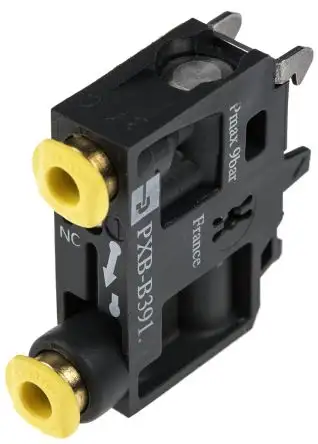Parker PXBB3911 plunger manual control valve regulates the flow of pneumatic fluids by manually controlling the movement of a plunger within the valve body. This plunger control valve is widely used in the manufacturing, automotive and oil & gas industries. It allows operators to precisely adjust the flow rate, pressure and direction of the fluid. This pneumatic manual control valve is irreplaceable in controlling pneumatic machinery, operating pneumatic tools and managing fluid flow in pipelines. The manual operation gives the operator flexibility in situations where immediate adjustments are required.
Features:
- Parker PXBB3911 plunger manual control valve has Viton seals for reliable pneumatic installations.
- This plunger control valve's NNP (normally non-passing) switching style keeps the flow restricted in the absence of manual involvement.
Frequently Asked Questions:
Q. What safety precautions should I follow when using a plunger pneumatic manual control valve?
A.
- Always depressurise the pneumatic system before performing any maintenance or repair work on the valve.
- Follow proper lockout / tagout procedures to prevent accidental activation of the valve.
Q. Is the flow through Parker PXBB3911 pneumatic manual control valve turbulent or laminar?
A. Flow through this plunger control valve is mostly turbulent.
Q. How should I actuate the plunger of a pneumatic manual control valve?
A. Depress or lift the plunger smoothly and firmly to open or close the valve. Avoid applying excessive force, as this could damage the valve.
Q. What should I do if the plunger of the valve becomes stuck or difficult to operate?
A.
- Check for any obstructions or debris that may be preventing smooth movement of the plunger.
- Inspect the valve for signs of wear or damage to the plunger mechanism, and perform any necessary maintenance or repairs.
Q. What should I do if I encounter air leakage from the valve?
A. Check for loose connections or damaged seals that may be causing the air leakage. Tighten any connections as needed, and replace any damaged seals to prevent further leakage.
 Change Country
Change Country

